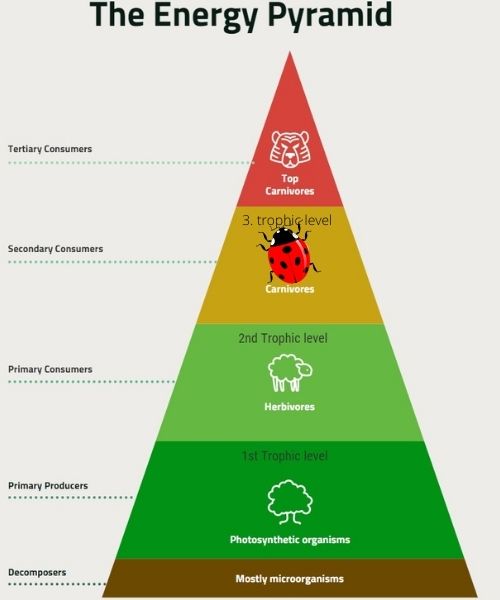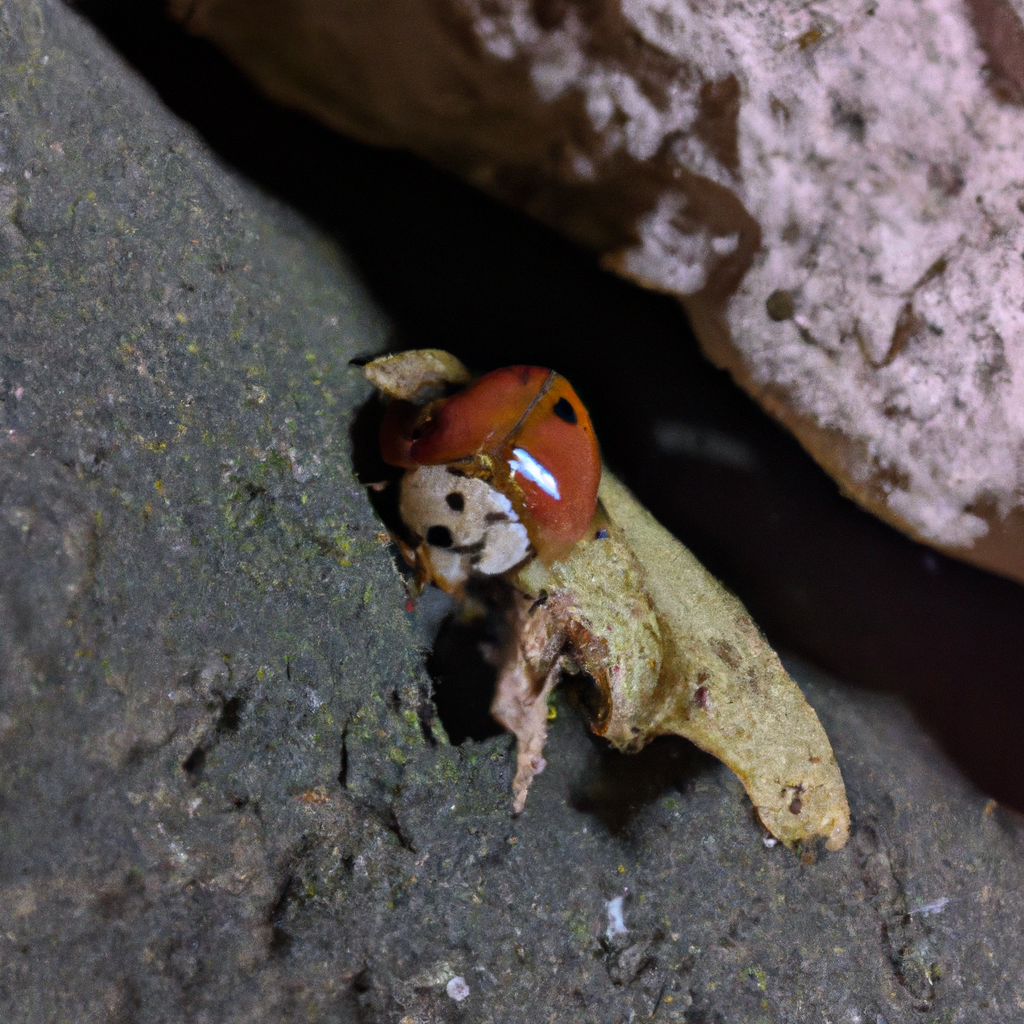Ladybugs are a beloved insect often found in gardens and other outdoor spaces. They’re seen as symbols of luck, but did you know that these tiny creatures can also act as decomposers?
No, ladybugs are not decomposers. They are predators, primarily feeding on aphids and other small insects. Decomposers are organisms that break down dead organic material, such as fungi and bacteria. Ladybugs play a vital role in controlling pest populations in gardens and agricultural fields, but they do not contribute to the decomposition process.
As an outdoor expert, I’m here to answer the question: Are ladybugs decomposers?
The outdoors is where many of us go to find freedom; exploring nature allows us to unplug from society and reconnect with ourselves. Understanding how each organism interacts with its environment is key if we wish to maintain this sense of peace, so let’s take a look at the role ladybugs play in decomposition!
Definition Of Ladybugs
Ladybugs are a common sight in the outdoors, both for their beauty and variety.
Did you know that there are over 5,000 species of ladybug across the globe?
Each species has its own unique eating habits, mating habits, habitat selection, insect predators and chemical defenses.
Also known as Coccinellidae, these little beetles have evolved to live in virtually every ecosystem on Earth; from deserts to rainforests, grasslands to wetlands and even urban areas.
As such they come into contact with many different plants, animals and other insects—and sometimes humans too!
Ladybugs possess an amazing range of behaviors that help them survive in their environment.
Now let’s explore the role of ladybugs in the ecosystem…
Role Of Ladybugs In The Ecosystem
Ladybugs are an important part of the ecosystem, providing essential services to their environment. They help keep pests under control by eating them and pollinating plants through their travels from flower to flower. Ladybugs also play a role in nutrient cycling and water conservation, which helps maintain balance in the habitat requirements necessary for healthy plant growth.

Their association with flowers is especially beneficial as it attracts other beneficial insects like bees that can aid in pollen transfer throughout the area. Not only do ladybugs provide these ecological services but they are also a food source for many predators such as birds or spiders who rely on them as part of their diet.
This demonstrates how interconnected organisms within an ecosystem really are!
As we’ve seen, ladybugs have a significant impact on our environment and its survival depends upon them being present and thriving. Moving forward, let’s take a look at where ladybugs fit into the food chain.
Ladybug’s Place In The Food Chain
Let’s take a look at Ladybug’s place in the food chain! Ladybugs are natural predators, helping to keep populations of pest insects in check. They also play an important role in pollination, helping to spread pollen between flowers. Finally, Ladybugs have a critical role as decomposers, helping to break down organic matter and return vital nutrients back to the soil.
Ladybug’s Role As A Predator
Ladybugs are not just cute little critters that we often find in our gardens. They’re also fierce predators! As a member of the Coccinellidae family, ladybugs have a wide variety of dietary habits, including preying on other species such as aphids and small insects like mites and caterpillars.
Ladybugs actually help to keep pest populations down by eating them, which is why they’re so prized among gardeners. And while they do have some natural enemies, none are quite as effective at getting rid of pests as these colorful beetles.
So if you want your garden to stay healthy and free from insect damage, be sure to welcome any ladybugs that come along – they may just save the day!
Ladybug’s Role In Pollination
Not only do ladybugs help keep pests at bay, but they also play an important role in pollination. This is because of their flower visiting habits; as they flit from plant to plant, they pick up and distribute pollen that helps fertilize the plants upon which insects rely for sustenance.
Ladybugs are especially effective when it comes to insect-plant interactions; by increasing habitat diversity, these colorful beetles can provide food sources for a wide variety of beneficial species. In this way, the presence of ladybugs not only improves our gardens’ aesthetic appeal – it strengthens its overall health and resilience too.
So if you want your garden to thrive and become part of nature’s delicate balance, be sure to welcome any ladybugs that come along – they may just be your secret weapon!
Ladybug’s Role As A Decomposer
Ladybugs also play a crucial role in the food chain as decomposers.
As they feed on dead plants and animals, they help break down organic matter into simpler forms that can be recycled back into the environment.
This process not only helps to keep our ecosystems healthy, but it’s essential for predator-prey relationships too.
Conservation efforts are therefore necessary to protect ladybug habitats from destruction and ensure their ability to perform this vital function.
These efforts will ultimately benefit all species that rely on each other within an ecosystem – so make sure you do your part and support ongoing conservation initiatives!
How Ladybugs Help Break Down Organic Materials
Ladybugs are incredibly important decomposers in the natural environment. In fact, there are over 400 species of ladybugs that have been identified worldwide and a single adult can consume up to 5,000 insect pests per year! This makes them an invaluable asset when it comes to maintaining healthy ecosystems.
These beautiful bugs also exhibit impressive plant feeding habits and territorial behavior which helps them find food sources quickly. Additionally, they serve as natural predators to other insects while simultaneously assisting with pollination activities thanks to their prey behaviors.
Not only do these little critters help reduce crop damage by consuming harmful pest populations, but they also act as a valuable source of nutrients for plants. This is why it’s essential that we protect our native ladybug species from human-caused threats like habitat destruction and pesticide use.
Because without them, many delicate ecological balances could be thrown off resulting in potential disastrous consequences for both humans and nature alike!
Frequently Asked Questions
How Long Do Ladybugs Live?
Ladybugs are considered beneficial insects because of their eating habits, which include munching on pests that damage crops.
But have you ever wondered how long these amazing critters live?
Well, depending on their breeding habits and the conditions of their habitat, ladybugs can survive anywhere from two weeks to a full year!
That’s right – if they’ve found the perfect environment with plenty of food sources and favorable temperatures, they could potentially enjoy up to 12 months in your garden or backyard.
So why not give them an extra chance at life by providing them with all the necessary requirements for survival?
Not only will it help control pest populations in your area but also add some much-needed color and diversity to your outdoor space.
What Do Ladybugs Eat?
Ladybugs are beneficial insects that have an important role in the environment. Not only do they help to naturally control pests, but they can also be found around the world due to their varied breeding habits and environmental preferences. Interestingly enough, ladybugs have a lifespan of up to three years when cared for properly!
When it comes to what these insects eat, they primarily feed off aphids as well as other small soft-bodied bugs. Furthermore, their chemical makeup allows them to consume plant matter and nectar as part of their diet too.
All in all, with their short lifespans yet diverse diets, ladybugs make fantastic additions to any garden or lawn.
Are Ladybugs Beneficial To Plants?
Ladybugs are a beneficial insect for plants, playing an important role in the attraction of pollinators and serving as natural controls on garden pests.
Their adaptability to different climates make them ideal for home gardens, both temperate and tropical.
Unlike some other insects, ladybugs can help protect your plants from damaging infestations while still providing beautiful color and charm to any outdoor area.
With their ability to thrive under various conditions, they’re sure to bring joy to anyone with a subconscious desire for freedom.
Do Ladybugs Have Any Natural Predators?
Ladybugs have many predators, ranging from birds and spiders to wasps and frogs. While they are excellent pest control agents for gardens and farms, ladybugs must use their predator avoidance techniques, such as camouflage colors or migration patterns, in order to survive.
In some cases, even their mating habits may play a role in helping them remain safe from predation. Habitat requirements are also important when it comes to protecting the ladybug population; environments with plenty of vegetation give these insects places to hide from hungry predators.
As outdoor enthusiasts we should do our part to provide a suitable habitat for our beneficial little friends so that they can continue providing us with natural pest control.
Do Ladybugs Inhabit All Parts Of The World?
Ladybugs are found all over the world, playing a vital role in ecology and pest control.
They have specific requirements for their habitat, such as temperature and availability of food sources, and often migrate to find an ideal location.
Reproduction cycles depend on regional climates, making migration patterns key to the species’ survival.
Not only do ladybugs contribute to ecological balance by eating pests, but they also provide people with freedom from harmful insects without resorting to chemicals or other interventions!
Conclusion
In conclusion, ladybugs are a remarkable species with the ability to live long lives and inhabit all parts of the world.
They consume pests that would otherwise harm plants, making them beneficial for gardeners and farmers alike.
Ladybugs also have few natural predators which helps keep their numbers stable and healthy over time.
As decomposers, they help break down organic matter in nature so it can be recycled back into the soil.
I find ladybugs fascinating creatures as they’re both beautiful and helpful to our environment.
I encourage everyone to take some time out of your day to look at these little critters up close – you never know what secrets they may reveal!
Whether it’s in your backyard or on an outdoor adventure, observing ladybugs is always an exciting experience.
And who knows? If we pay attention to them, maybe one day we’ll learn even more about this amazing insect species and how important they really are for us humans too!




